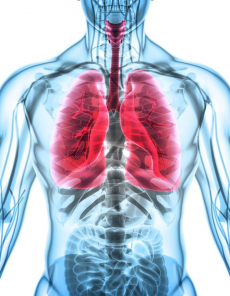

Cystic Fibrosis: A major advance in the scientific studies for the molecular mechanisms, symptoms and treatments
Sodium ion presence drives chlorine and water reabsorption and dehydrates mucus and airway surface materials. The cilia on epithelial cells that are responsible for clearing mucus build up become compressed by highly viscous mucus inhibiting its function. Airway surface liquid ordinarily would facilitate the movement of mucus for clearance, but lack of results in static mucus that increases susceptibility to bacterial infections in the lungs. Cilia also function in providing a large surface area for gas exchange, this is limited by compression caused by mucus build up. Similarly, CFTR proteins in the pancreatic duct and sweat glands face infection caused by mucus build-up.
In sweat ducts, chloride ions are not transported from the ducts to the cytoplasm, instead they are trapped in the ducts and end up being pumped into the skin. This in turn, alters the electrical potential around and inside the cell. Normally the potential would cause cations (like sodium) to diffuse into the cell. As sodium is not reabsorbed, it combines with chlorine in the sweat ducts to create salt which is lost in sweat. The high salt hypothesis assumes that cystic fibrosis sufferers have a significantly higher salt concentration in airway surface liquid compared to healthy individuals. If more ions are in the airway surface liquid this produces an unusually negatively charged composition that impairs natural bactericidal enzyme activity, this allows bacteria to thrive in formed hypoxic niches in the lungs.
Conjectures about defective CFTR being the cause of excessively inflamed airways have been made, after all it does interfere with autophagy regulation. Autophagy is the process of degradation of cells that are defective in order to continue a balance of recycled and synthesised cellular products. Research suggests that high levels of faulty CFTR inhibit autophagy, therefore aggresomes gather causing inflammation of the lungs. Inflammation generates scarred lung tissue.
Pseudomonas aeruginosa binds to CFTR, causing the common infection for cystic fibrosis sufferers; chronic bacterial infection. Healthy individuals will provide an immune response but those with cystic fibrosis struggle as the bacterium can bind without causing an immune response. This combined with excess mucus enhances the risk of infection being severe.
Class I, II and III mutations make sufferers vulnerable to pancreatic insufficiency. Normally, secreted digestive enzymes, from the pancreas, combine with bicarbonate-rich fluid to aid food digestion in the small intestine. Whilst pancreatic gland functioning remains rather constant, difference in bicarbonate-rich fluid secretion is observable. Thickened secretions cause blockage of the small intestine by enzyme presence and mucus. Blockage also increases the pancreatic pressure, making the pancreas susceptible to damage due to lack of structure and support.
Cystic fibrosis sufferers often appear moderately meagre as a result of nutrient deficiency and salty sweat. Additionally, clubbing of the fingers and toes occurs as tissue lacks oxygen due to inefficient gas exchange between the bloodstream and lungs. There are various tests which can confirm diagnosis. As dysfunctional CFTR proteins in the sweat ducts produce very salty sweat, assessing someone’s sweat salt concentration is an effective measure for diagnosing cystic fibrosis.
Image: https://aridispharma.com/cystic-fibrosis/

0 Comment:
Be the first one to comment on this article.